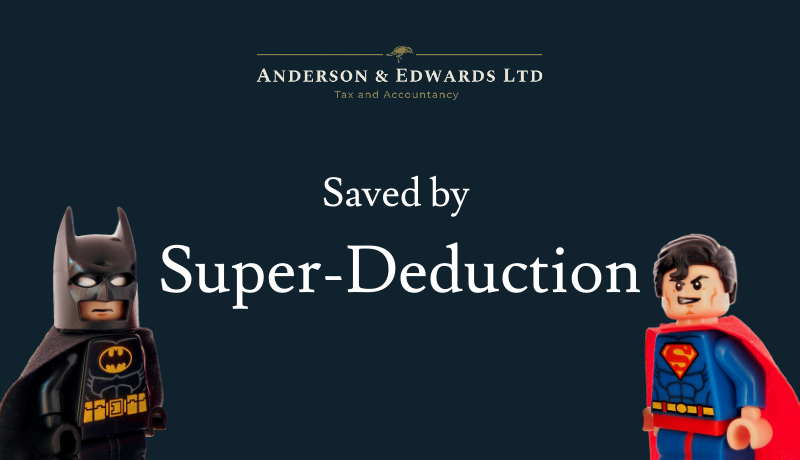
In the March 2021 Budget, the UK government announced the new super-deduction allowance. It sounds very catchy, but what are the realities of it for small/medium-sized businesses?
The allowance gives companies an opportunity to reduce their taxable profit. This is done by claiming 130% of the cost of qualifying expenditures (see what qualifies below).
The super-deduction is a tax relief companies should make use of. After all, if your taxable profit is lower, your corporation tax bill will be lower.
Limited companies.
Sole traders and partnerships are not eligible for the new relief. Please get in touch if you want to discuss the right business structure for you. Read our other blog discussing the different structures.
It’s important to bear in mind that not all expenses qualify for the allowance. The 130% super-deduction only applies to brand new (not second hand) ‘main rate’ capital allowance. Most assets will still qualify for Annual Invesment Allowance which gives the company 100% tax relief in the year the asset was purchased. With the purchase of brand new assets, the company may be able to claim the super-deduction for these assets and get the additional 30% tax relief.
Assets that fall into the ‘main rate’ category are:
You also need to have bought the new item between 1 April 2021 and 31 March 2023.
Here’s an example that might help you paint a better picture.
Jimmy owns "Jimmy's Window Cleaning Ltd". He purchased a secondhand ladder for £500 and also a brand new van for £15,000.
His profits (before considering the asset purchases) were £50,000 for the year.
The ladder was secondhand, so does not qualify for the super-deduction. He can still claim £500 of the Annual Investment Allowance.
The new van was brand new so will qualify for the super deduction. To find out how much would be reduced, we take 130% of the van cost - 130% x £15,000 = £19,500.
We then add the £19,500 (from the van) to £500 (the ladder) - £19,500 + £500 = £20,000. This is how much his taxable profit will be artificially reduced. Even though the secondhand ladder does not qualify for the super deduction, it still qualifies for the Annual Investment Allowance.
To work out Jimmy’s corporation tax liability (how much he is due to pay), we take 19% (current rate of corporation tax) of his profits after the van and ladder have been expensed.
Artificial reduction (super deduction + ladder cost to be claimed from Annual Investment Allowance): £19,500 + £500 = £20,000
Gross profit: £50,000 (profit before purchases) - £20,000 (taxable reduction) = £30,000
Tax liability (due to pay): 19% of £30,000 = £5,700
Assuming Jimmy didn’t have any other expenses to claim, he would have a net profit of £24,300, instead of £23,455 (£855 less).
Claiming the super-deduction on the van saved Jimmy £855 of corporation tax, in comparison to the old rules.
The super-deduction and capital allowances are great examples of an area of tax where accountants and tax advisors work well together. That’s why we specialise in both.
Speak to your accountant/tax advisor (or us for both) about how to work out your super-deduction and reduce your tax bill.
© 2025 Anderson & Edwards Ltd|Registered in Scotland SC678768|Privacy Policy|Website by Broxden